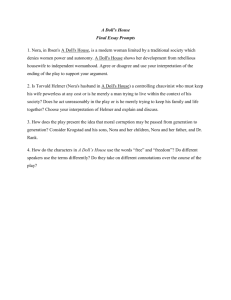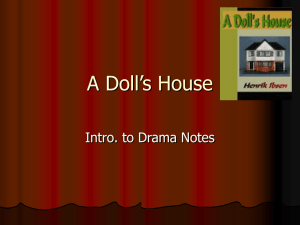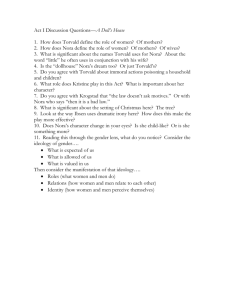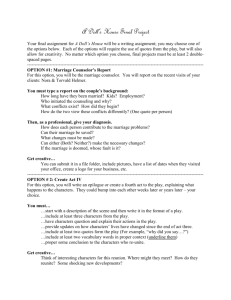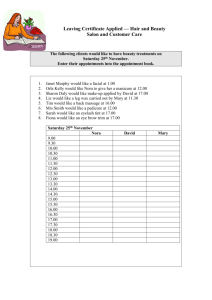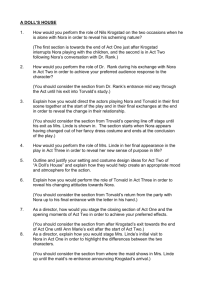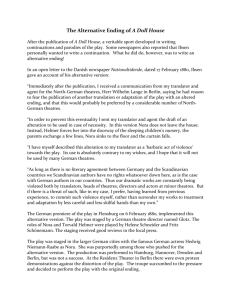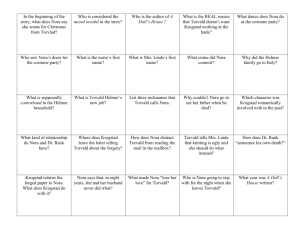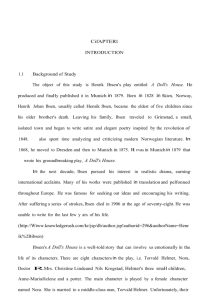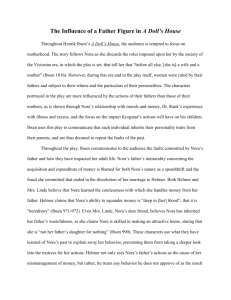A Doll`s House - Nevermindthebllcks
advertisement
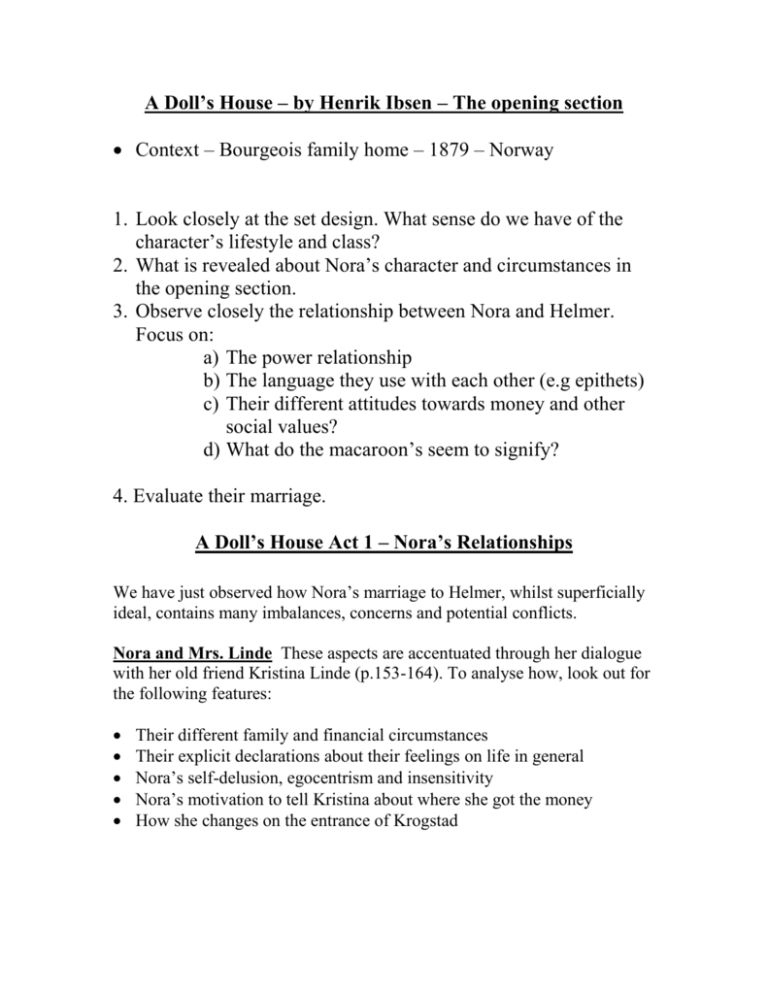
A Doll’s House – by Henrik Ibsen – The opening section Context – Bourgeois family home – 1879 – Norway 1. Look closely at the set design. What sense do we have of the character’s lifestyle and class? 2. What is revealed about Nora’s character and circumstances in the opening section. 3. Observe closely the relationship between Nora and Helmer. Focus on: a) The power relationship b) The language they use with each other (e.g epithets) c) Their different attitudes towards money and other social values? d) What do the macaroon’s seem to signify? 4. Evaluate their marriage. A Doll’s House Act 1 – Nora’s Relationships We have just observed how Nora’s marriage to Helmer, whilst superficially ideal, contains many imbalances, concerns and potential conflicts. Nora and Mrs. Linde These aspects are accentuated through her dialogue with her old friend Kristina Linde (p.153-164). To analyse how, look out for the following features: Their different family and financial circumstances Their explicit declarations about their feelings on life in general Nora’s self-delusion, egocentrism and insensitivity Nora’s motivation to tell Kristina about where she got the money How she changes on the entrance of Krogstad Nora and Rank – Dr. Rank is also used as means of revealing aspects of Nora’s personality and marriage: Their contrasting attitudes to life and society His cynicism opposed to her naiveté His explicit comments and her surreptitious ones Her use of the macaroons Nora and Krogstad – Having already been introduced to Krogstad through his entrance, comments by Rank and Nora’s excessive concern about him, the audience is ready for a very different kind of relationship. Her different manner towards him His family and financial circumstances Their actual financial relationship Their similarity in past actions Nora and Helmer – Now we know Nora’s real situation, look closely at how she behaves with her husband at the end of the act. Her new attitude towards life Her desire for dominance The dramatic irony behind Helmer’s comments Extended question – How does Ibsen create dramatic tension in the first act to reveal the unstable premise of the Helmer’s marriage?
